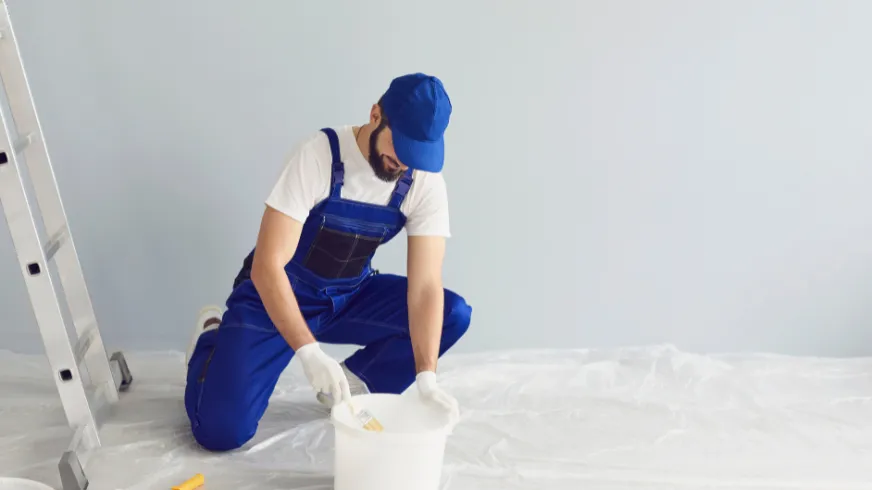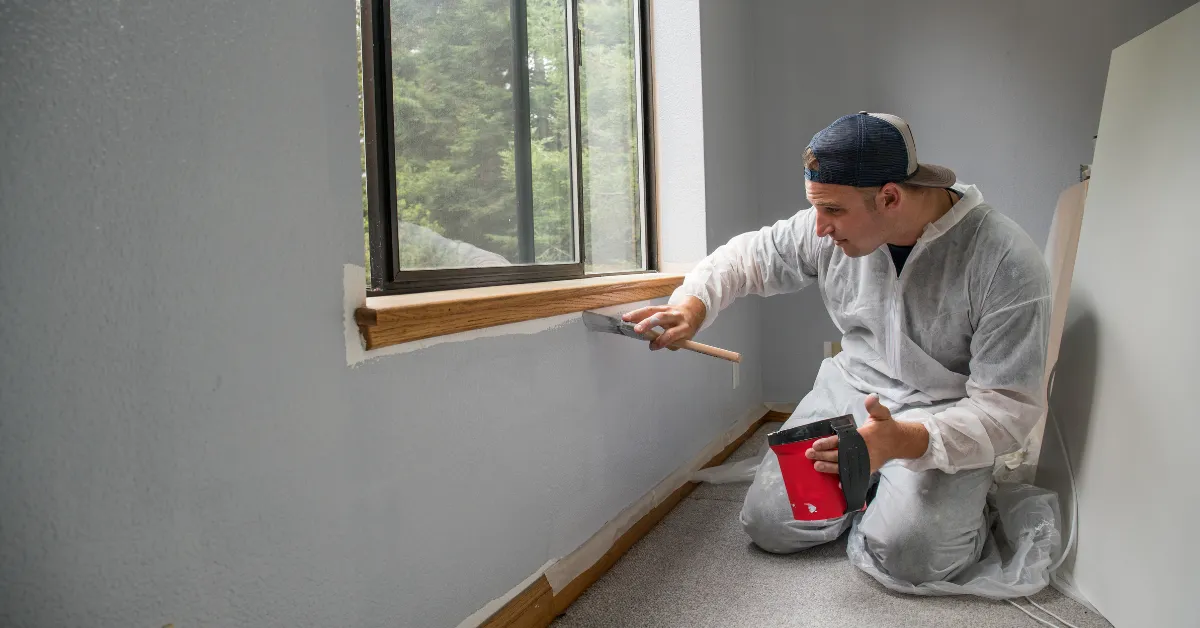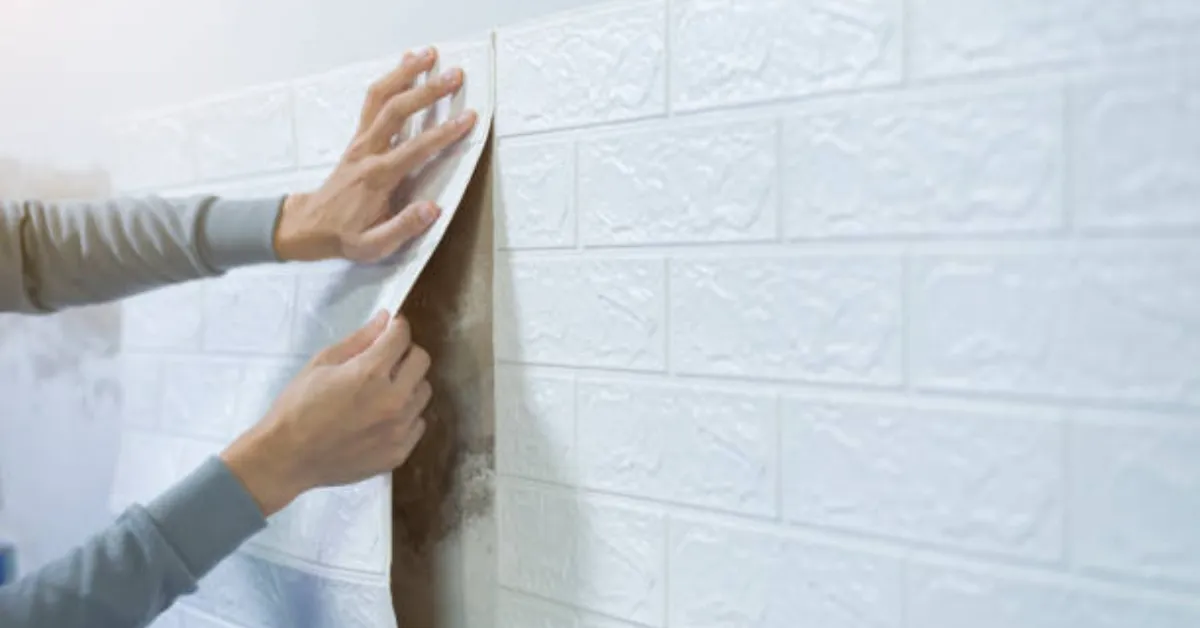When painting a room, you might ask yourself, “Can I use exterior paint for interior?” This is a common question, especially if you have leftover outdoor paint. It seems like a simple way to save money or avoid waste. But while the idea may seem smart at first, it’s important to understand how paint works and whether it’s really safe to use exterior paint inside your home.
In this blog, we’ll explain everything in simple, easy-to-understand language—like you’re 5 years old—so you’ll know what’s best for your walls, your family, and your home’s health.
What Is Exterior Paint Made For?
Exterior paint is made for painting outside. Think of fences, walls, and buildings that have to face the sun, rain, wind, and even snow. Exterior paint is like a superhero coat for your house. It protects it from getting hurt by weather, bugs, and sunlight.
It has special chemicals called additives and binders that help it stay strong in harsh weather. Some types even keep mold and mildew away. That’s why it lasts longer outside—but that doesn’t always mean it’s good for indoors.
What Is Interior Paint Made For?
Interior paint is made for painting inside your house—like your bedroom, kitchen, or living room. It doesn’t need to be weatherproof because it stays warm and dry inside. But it does need to be:
- Easy to clean
- Safe to breathe
- Smooth and nice-looking
- Low in smell and chemicals
Interior paint is like a soft blanket: safe, calm, and friendly for people, kids, and even pets.
Key Differences Between Interior and Exterior Paint
Let’s break it down simply.
| Feature | Exterior Paint | Interior Paint |
|---|---|---|
| Made for | Outdoor walls, fences, doors | Bedrooms, living rooms, kitchens |
| Strong chemicals? | Yes – to fight weather and bugs | No – safer for indoor breathing |
| Smelly? | Yes – stronger odor | Low or no smell |
| Washable? | Not always easy to clean indoors | Usually easy to wipe and clean |
| Safe for kids/pets? | No – can give off harmful fumes | Yes – low VOCs (safe chemicals) |
So, Can I Use Exterior Paint for Interior?
The short answer is: No, you shouldn’t use exterior paint inside your home—especially not in living spaces where people spend time, sleep, or eat.
Even though exterior paint is tough, it contains strong chemicals and high VOCs (Volatile Organic Compounds). These chemicals help it survive storms and sun—but they can release toxic fumes inside your house, which can be harmful to your lungs, eyes, and brain.
Especially dangerous for:
- Children
- Babies
- Pets
- People with asthma or allergies
So while it’s technically possible to paint a wall with exterior paint, it’s not healthy or safe. It’s kind of like using bug spray on your sandwich—definitely not a good idea!
When Can You Use Exterior Paint Inside?
There are only a few special cases where you might get away with it—but still with caution:
1. Basements or Garages
If it’s a place where no one sleeps or stays for long, and it needs to fight moisture, exterior paint might be okay.
2. Storage Sheds or Utility Rooms
If the room isn’t part of the main living space and has good airflow, it might be acceptable to use exterior paint here.
Warning: Even in these places, make sure there is good ventilation and no one hangs around for long periods.
Risks of Using Exterior Paint Indoors
Here’s why it’s not a good idea to use exterior paint inside:
1. Toxic Fumes
Exterior paint releases dangerous gases called VOCs. These fumes can hang in the air for days or even weeks. They can cause:
- Headaches
- Dizziness
- Breathing problems
- Eye or skin irritation
2. Sticky Finish
Exterior paint can feel sticky or tacky for a long time because it’s not meant to dry fast indoors. It might attract dust and look dirty quickly.
3. Cracking or Peeling
Since exterior paint is made for rough surfaces, it may not bond well to indoor drywall or plaster, causing the paint to crack or peel.
Safer Alternatives You Should Use Instead
Instead of using exterior paint inside, pick the right type of interior paint:
Flat/Matte Paint
Great for ceilings and walls with little traffic. Not shiny but hides imperfections.
Eggshell or Satin Finish
Perfect for living rooms or bedrooms. It has a little shine and is easy to clean.
Semi-Gloss or Gloss
Best for kitchens, bathrooms, or doors. It’s super durable and easy to wipe down.
And most importantly, look for Low-VOC or Zero-VOC paints to keep your air clean and safe.
What About Leftover Exterior Paint?
If you have leftover exterior paint, don’t throw it away. Here are a few safe ways to use it:
- Paint outdoor furniture
- Touch up your shed or fence
- Use it for small garden projects (planters, bricks, etc.)
Just keep it outside where it belongs.
Expert Tip for Parents and Pet Owners
If you have little kids or furry friends running around, it’s extra important to only use safe, indoor paint. Their lungs are smaller and more sensitive, and they can be affected by even a small amount of toxic fumes.
Paint smells might seem harmless, but they can do real damage over time—especially in closed rooms with poor air flow.
Final Thoughts
So, can I use exterior paint for interior?
No—you shouldn’t. It may seem convenient, but it’s not safe, not healthy, and not made for indoor walls.
Exterior paint is made for the outside world. Your inside world needs something safer, softer, and smarter. Always use interior paint for indoor spaces—your family, pets, and lungs will thank you!




